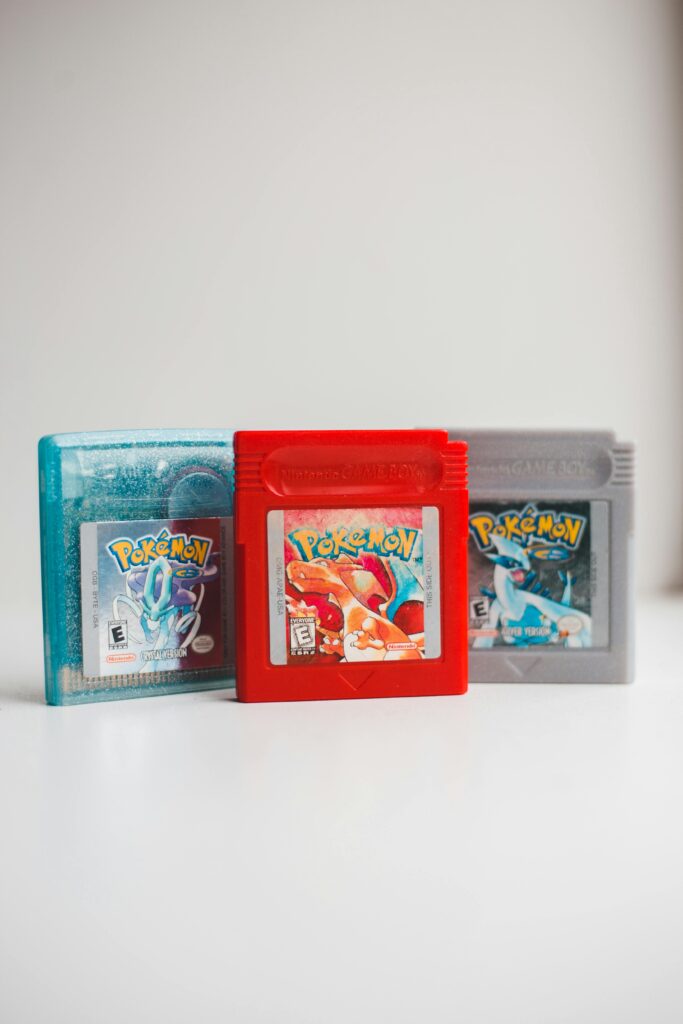How Pokémon Cards Became a Global Craze
Welcome back to our journey through the history of Pokémon cards! At Cardzards, where we Find Magic in Every Card, we believe every collector should understand the roots that shaped today’s Pokémon Trading Card Game (TCG). And if you were a kid in the late ’90s or early 2000s, chances are your first introduction to Pokémon cards came with a little black logo in the corner that read: Wizards of the Coast.
This four-year period was a cultural explosion—the golden age of vintage cards, playground trades, and binder battles. Let’s rewind and revisit the legendary WOTC era and explore what made it such a defining moment in the Pokémon legacy.
🔥 The Spark That Lit the Flame — U.S. Release of the Pokémon TCG
In January 1999, the Pokémon Trading Card Game was officially released in English by Wizards of the Coast (WOTC), the company famous for Magic: The Gathering. Partnering with Nintendo, WOTC localized the Japanese Base Set into English, and almost instantly, Pokémania erupted across the U.S. and much of the Western world.
The TCG wasn’t just a hit—it was a phenomenon. Stores couldn’t keep up with demand. Booster boxes flew off shelves. And kids everywhere were practicing their best poker face to pull off trades in the schoolyard.
🧱 Building the Foundation: The WOTC Pokémon Sets
The WOTC era is defined by a series of now-iconic sets that built the foundation of what Pokémon collecting still celebrates today. Here’s a breakdown of the core sets released during this time:
⚔️ Base Set (1999)
- Introduced 102 cards
- First Edition, Shadowless, and Unlimited printings
- Holy Grail: 1st Edition Holographic Charizard
(Still one of the most iconic and valuable cards in the hobby)
🌿 Jungle (1999)
- First expansion set (64 cards)
- Introduced new holos like Snorlax, Vileplume, and Kangaskhan
- Added 1st Edition symbols and introduced non-holo rares
🦴 Fossil (1999)
- Brought in 62 new cards
- Fossil Pokémon like Kabutops, Aerodactyl, and Articuno joined the TCG
🧪 Base Set 2 (2000)
- Reprint of Base and Jungle cards
- Less valued today due to lack of 1st Editions
🦹♂️ Team Rocket (2000)
- First set to introduce Dark Pokémon like Dark Charizard and Dark Dragonite
- Gave fans a glimpse into the villainous side of the Pokémon world
💪 Gym Heroes & Gym Challenge (2000)
- Introduced Pokémon linked to iconic Gym Leaders
- Erika’s Vileplume, Lt. Surge’s Raichu, and Blaine’s Arcanine were standout cards
- High popularity due to character connections from the anime and games
🌌 Neo Genesis, Discovery, Revelation, Destiny (2000–2002)
- Entered the Johto region, introducing Baby Pokémon, Shinings, and Legendary Beasts
- Neo Destiny’s Shining Charizard is one of the rarest WOTC-era pulls
💥 Legendary Collection (2002)
- Famous for its “firework reverse holos”
- Reprints of original cards in a flashy style that collectors still chase today
🧿 Expedition, Aquapolis, Skyridge (2002–2003)
- The final three WOTC sets
- Introduced e-Reader compatibility via barcode-style strip
- Modern-style art and chase holos like Crystal Charizard and Crystal Lugia
- Short print runs and limited popularity at release make these ultra-valuable today
🎨 The Art, the Aura, the Nostalgia
A huge part of the WOTC magic lies in the artwork. Legendary illustrators like Mitsuhiro Arita, Ken Sugimori, Kagemaru Himeno, and Keiji Kinebuchi brought Pokémon to life in ways that still inspire awe in collectors today. The hand-drawn, minimalist backgrounds gave the Pokémon center stage—especially the holos, which shimmered with a sense of wonder.
This era wasn’t just about battling—it was about collecting what felt magical.
📊 Why the WOTC Era Still Dominates the Market Today
In 2020, during the pandemic-fueled boom, prices for WOTC cards skyrocketed. 1st Edition Base Set Charizard in PSA 10 condition sold for over $300,000. But it’s not just about price:
- These cards represent the beginning of the hobby in the West.
- They’re harder to find in good condition due to age and wear.
- Print runs were smaller than today’s modern sets.
- Nostalgia drives demand for older collectors returning to the hobby.
Even played copies of WOTC holos have value because of their scarcity and emotional appeal.
😢 The End of an Era: Why WOTC Lost the License
In 2003, Wizards of the Coast lost their license to print Pokémon cards as Nintendo decided to bring TCG production in-house, launching Pokémon USA (later The Pokémon Company International). With the end of Skyridge, the WOTC chapter closed—but the cards it left behind have become a gold standard for vintage collectors.
🧠 Bottom Line: The Era That Started It All
The Wizards of the Coast era (1999–2003) wasn’t just the start of Pokémon cards in the West—it was a cultural movement. For many of us, our first Pokémon cards came from a base set booster or a jungle-themed binder. This era gave us Charizard hysteria, Shining cards, Dark Pokémon, and the unforgettable feeling of cracking open a pack and seeing that rainbow holo flash.
Whether you’re hunting down that last Gym Challenge holo or just reminiscing about your first Pokémon trade at recess, the WOTC era is pure cardboard magic.
And at Cardzards, we’ll always honor the roots of our favorite hobby.
👉 Find Magic in Every Card.
